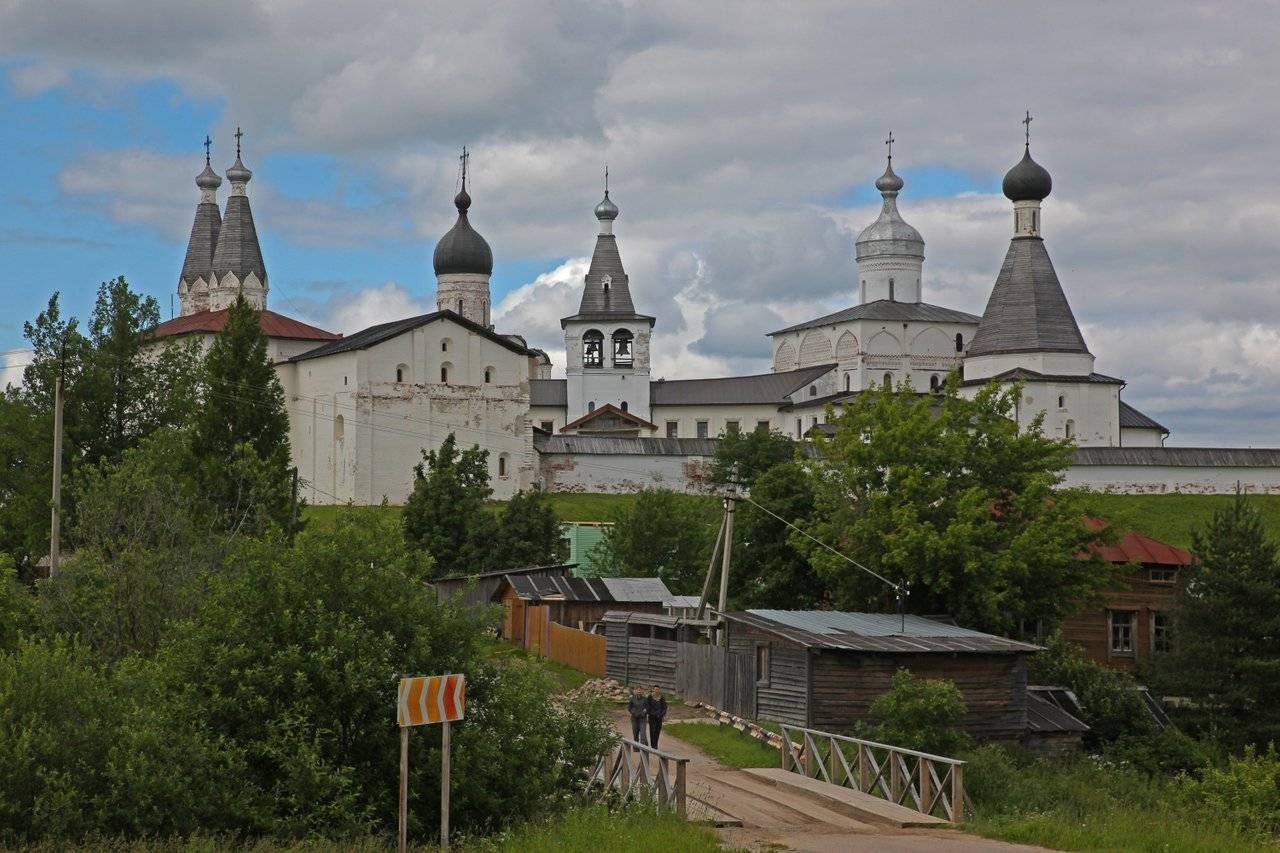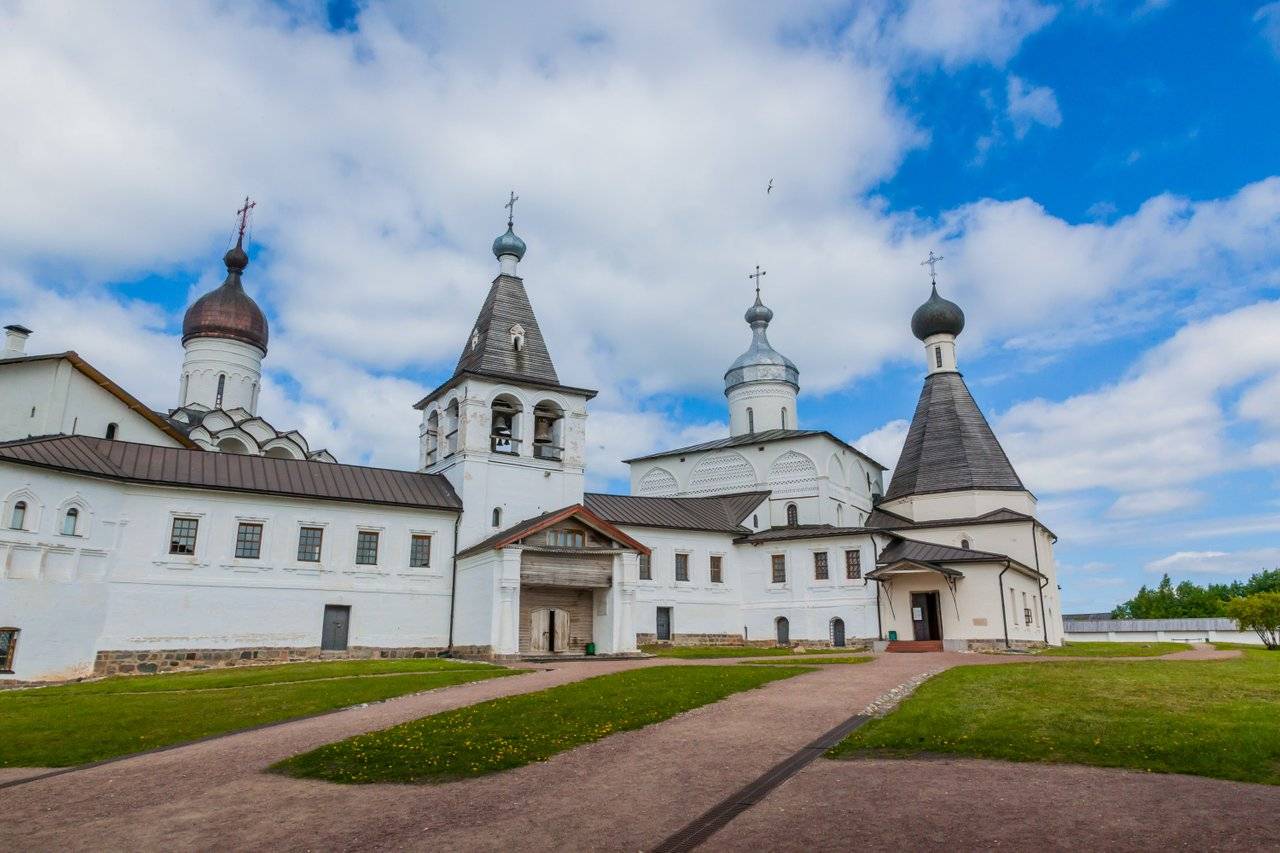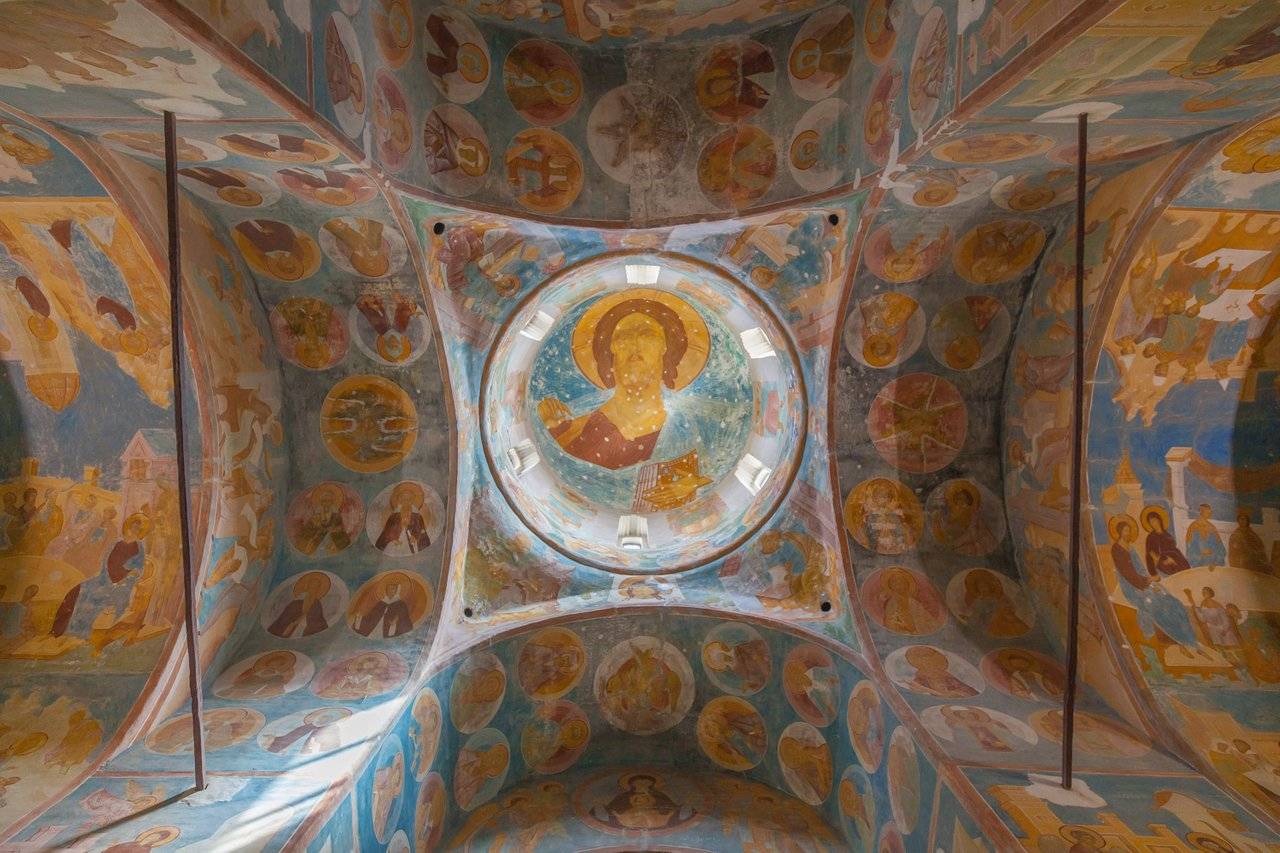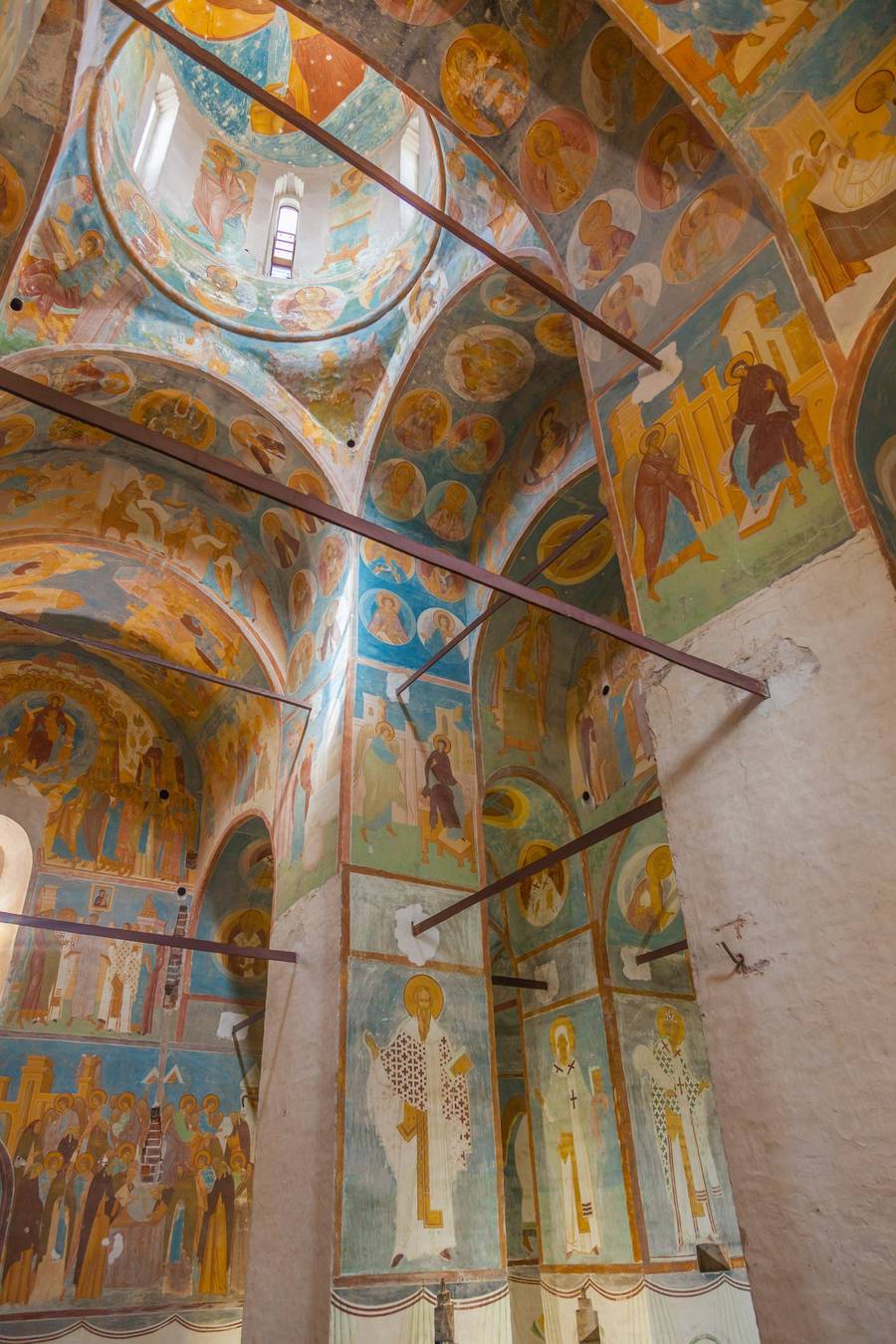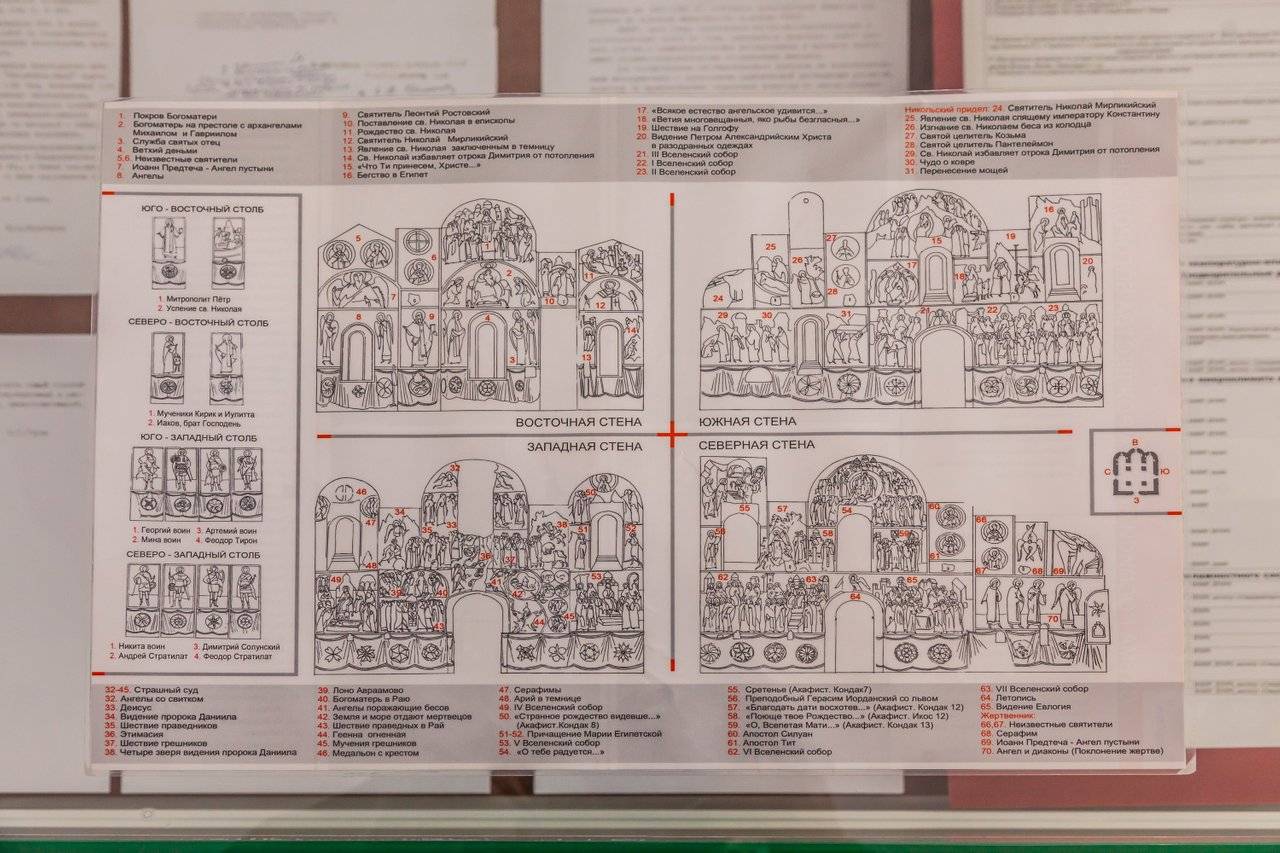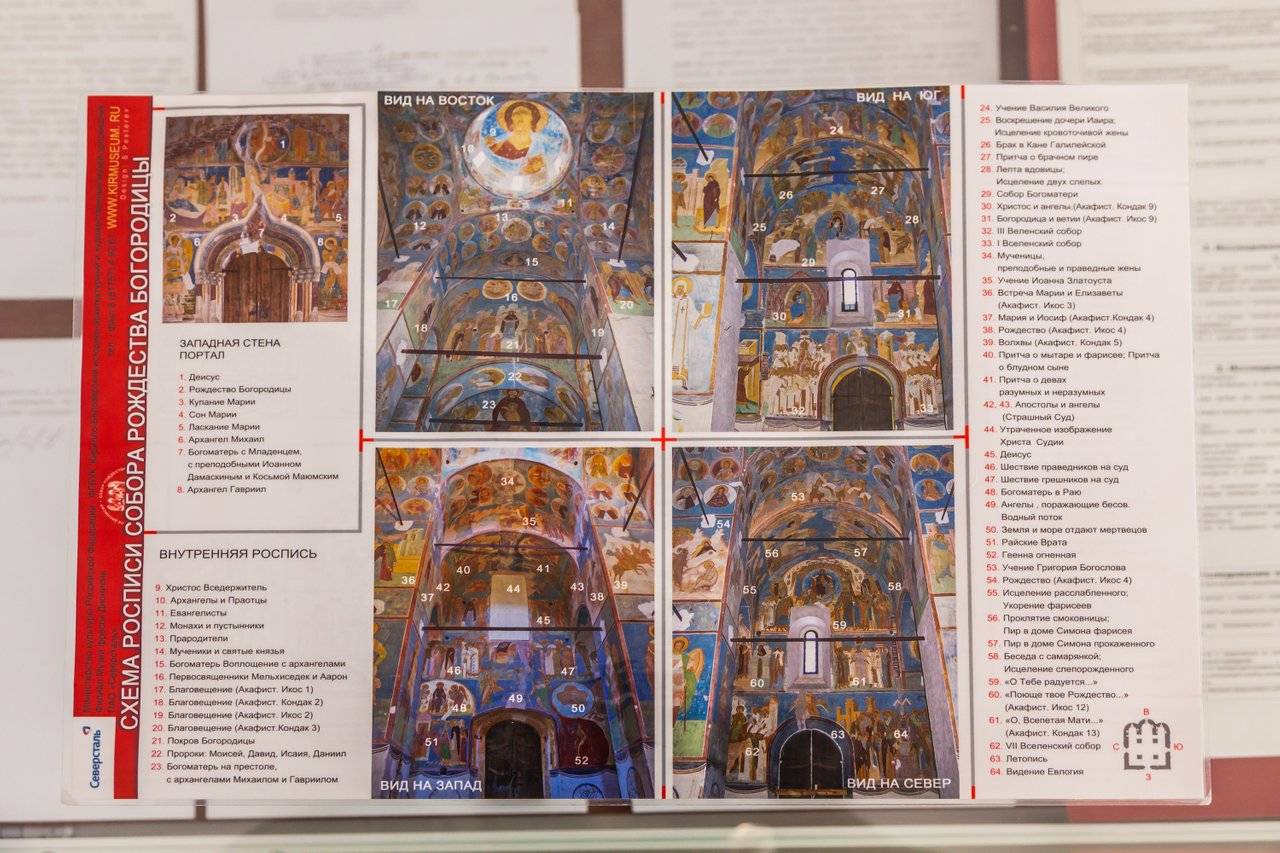This is second part of my story about Ferapontov monasery
As I promised, a few words about the frescoes of the Farapontov Monastery.
The main temple of the monastery is the Nativity of the Virgin Cathedral.
According to the text of the chronicle on the slope of the north door, it is painted by Dionysius and his sons from August 6 to September 8, 1502. This is the only surviving painting of the outstanding ancient Russian artist Dionisy, the direct heir of Andrei Rublev and the last representative of Russian national art in the period of his heyday and the formation of the united Russian state.
The area of the cathedral's murals is 600 sq.m. The team of artists led by Dionysius did the work on the painting of the cathedral for the month.
What is the difficulty of working on a fresco? Why has this work been preserved for hundreds of years without change? What is a fresco?
Once I saw a report from a workshop of a famous Moscow restorer. He showed how the frescoes were made.
The whole complexity of this method of writing lies in the fact that the artist has almost no opportunity to correct something. The pattern is applied to the wet plaster and it is the agent that preserves the pigment. Drying, the plaster binds the pigment particles and preserves the pattern for centuries.
If you miss the moment when the plaster is drying up - everything will be in vain.
In addition, this method changes the color and color saturation after drying. The master must take this into account and he will be able to see the finished work only after the wall has dried.
When I was in Ferapontov monasery I saw not only fresco but some museum info. It shows how were made frescos.
In addition to the complexity of working on raw plaster, there are still a lot of mysteries in the composition of paints.
The master had to find his own secrets and pigments, which would provide the necessary colors and shades. These are natural materials, minerals. For example: copper phosphate is pseudomalachite, the main copper carbonate is malachite, the main copper chloride is attackamate, copper sulfate is poznyakit.
At first Iet you know some terms.
Fresco (from the Italian word "fresco" - fresh) - one of the main techniques of wall paintings, painting with water colors on fresh, moist plaster, which when dried, forms the thinnest transparent film that fixes the paint and makes the fresco durable. The fresco was well known at all times, since antiquity.
Primer for a fresco - consists, as a rule, of hydrated lime and mineral fillers - quartz sand, limestone powder, crushed bricks and ceramics. Sometimes in the composition of the soil include organic additives (straw, hemp, flax, etc.), which protect the plaster from cracking.
Grafya - drawing a preliminary drawing, marking out contours with some sharp object. It is applied to the plaster before working in the fresco technique, as in other ways the contours of the pattern are poorly visible.
Pigments - all kinds of coloring matter, colored powder, which enters into all varieties of paint and determines the color qualities of the paint.
It's info from museum site
Ready to Blog & Earn?
With TravelFeed, easily start your own travel blog and earn as you go. It's the smart platform for travelers who want to profit from their passion. Create a free account
How it was made
Fresco refers to very time-consuming types of painting, requiring the greatest creative tension, skill, speed and accuracy in the work. The most suitable time for creating a fresco painting is a warm summer period, from May to September.
Beginning painting from the upper parts of the temple and altars. The masters applied a surface (wet plaster) to the wall with a section of this size that they had to cover with painting during the day, until the soil was dry. Usually it was one composition, so that the day's seam - the junction of the next section of the ground - fell on the decorative frame that framed the scenic scene. The usual area of the day plot is 6-9 sq.m.
After applying the ground, the masters smooth the surface, mark out the vertical and horizontal lines, specifying the place of the image on the wall. Then a preliminary sketch of the entire composition was made, which was performed with liquid paint (yellow, red, brown or black). Sometimes the main lines of the sketch were reinforced by a graph (drawn with a sharp object).
Then the masters covered the halo and the whole head of the holy ocher, and a grayish-green tone was superimposed on top of it. On it in two ways wrote lighter convex parts: first a light yellow paint, then limed with whites. The image of the face was first performed with a red-brown paint (eye, nose, eyebrow), then dark green, almost black. Likewise, clothes were also written: in the main tone (green, pink, blue), wide bands of gaps were laid. The shadows were done with red paint. If there was a need, the artist prescribed the details and over the dried plaster.
The paint was applied to the wet plaster in that short period of time, until the solution had "grabbed" and absorbed it freely. Such a solution is also called "ripe". To write on it it is necessary easily and freely, and, the main thing, as soon as the stroke of the brush loses smoothness and the paint ceases to be absorbed, it is necessary to finish the work.
During the drying of the plaster, the crystals of the colorful pigments "germinate" through the plaster layer, firmly fixing on the surface of the wall. Some pigments - ocher red, shungite, hematite - after drying the soil almost do not change the color, the same colors as yellow ocher, lapis lazuli, glaucanite, etc., very much lighten. Therefore, the master must take into account the peculiarities of working with each pigment and anticipate the final result.
It's info from museum site
Travel Resources for your trip to Russia
Recommended by TravelFeed
Flights: We recommend checking Kiwi.com to find the best and cheapest flights to Russia.
Accomodation: Explore the best places to stay in Russia on Booking.com, Agoda and Hostelworld.
Car Rental: For hassle-free car hiring, DiscoverCars is our trusted choice with a wide selection of vehicles.
Internet: Got an eSIM compatible phone? Airalo is perfect for reliable internet access during your trip. Just install it before you go, and you're set!
Day Trips & Tours: We recommend GetYourGuide for a variety of well-organized and enjoyable activities.
Travel Planner: Need a hand planning? Our free travel planner chatbot is your personal guide to Russia. Chat now.
Disclosure: Posts on TravelFeed may contain affiliate links. See affiliate disclosure.

